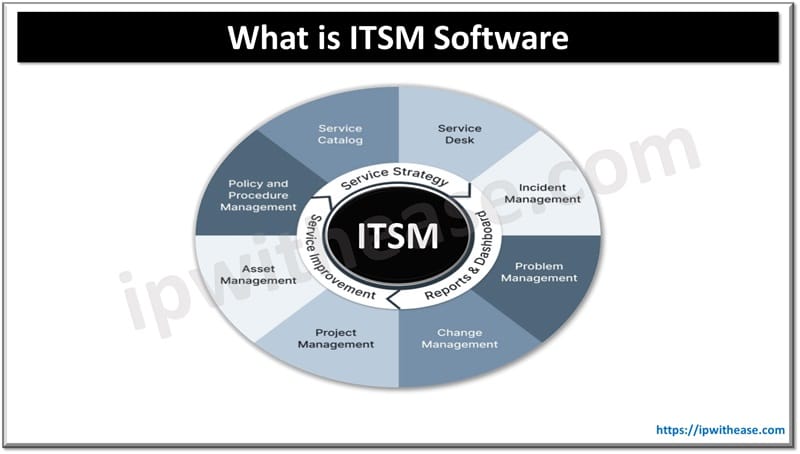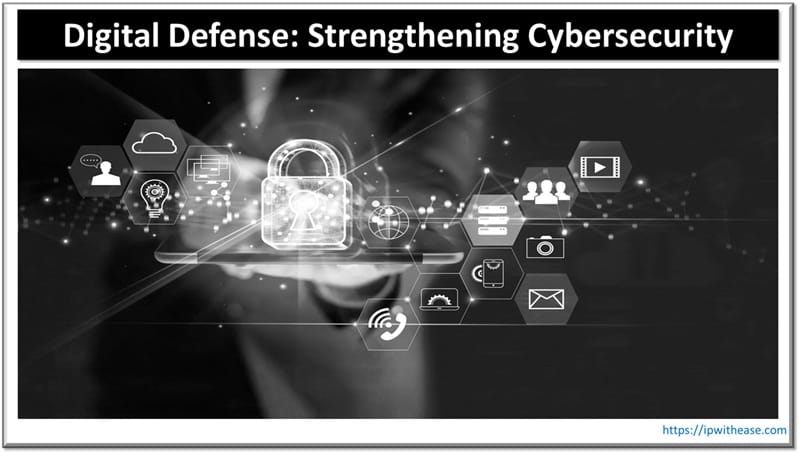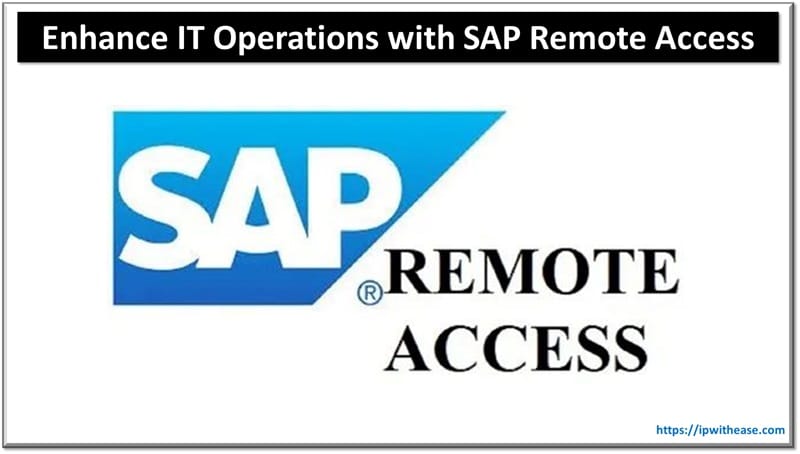Table of Contents
It may not be an easy process for organizations to manage their IT services in this competitive environment, especially if the goal is to ensure both customer satisfaction and high productivity. IT Service Management (ITSM) as a strategy that aims to standardize and manage the IT processes within an organization. The automation of processes within the framework of IT management allows companies to increase the level of quality of the rendered services, the efficiency of the business processes, and allows cutting cost of operation.
One of the powerful tools to facilitate ITSM practices is ITSM software. ITSM tool provides a best practice model for the efficient organization, delivery and tracking of information technology services. The software is vital for businesses as it assists departments of IT in incident management, change management, and asset management in addition to other business functionalities. Let’s examine what is ITSM software, its functionality, and value for business in contemporary reality.

Understanding ITSM Software: Definition and Purpose
As a software solution ITSM serves as a Framework for incident management, change management, asset management and all the processes that revolve around IT service management. While it serves as a repository and an automated selling center for businesses, it helps streamline IT processes and serve end users faster that aligns IT services to the business objectives with and with minimum disruption of the users.
In today’s corporate environment, ITSM is one of the most sought-after software irrespective of the size of the organization. ITSM has greatly enabled units to receive and respond to issues with speed as it also eases operational processes. This software is most helpful in those industries where the IT setup is convoluted as it renders a greater visibility into the business, better resource planning, and enhances the dependability of the offered IT services.
Core Features of ITSM Software
Any preferred ITSM tool contains a lot of functionalities to address various aspects of working in IT service management. Below are some essential elements present in the ITSM applications:
- Incident and Problem Management
- Incident management is a process that is oriented toward speed and aims to restore normal functioning at the organization by resolving user’s reported issues quickly. Problem management differs in that it attempts to establish and address the underlying causes of incidents.
- The ITSM tools provide the IT teams a central place where they can log, view, track and prioritize incidents and problems through a dashboard. Problem resolution in a timely manner will lead to greater levels of end-user satisfaction and will also minimize downtime.
- Change Management
- ITSM offers assistance to change management by providing guidelines linked to change planning, assessing the need for change, and integrating it into the organization. Change management in ITSM enables the updates of applications, shifting of systems, and upgrading of hardware among others.
- With change management, IT departments can mitigate risks associated with changes and maintain operational stability. ITSM software usually includes approval workflows, scheduling tools, and audit trails to track changes and ensure compliance.
- Asset and Configuration Management
- With the growth of IT assets and their interdependence with various components, identification of IT assets such as hardware, software and network configurations are an important aspect taken care of by ITSM software modules. This functionality helps organizations maintain an up-to-date inventory and track asset life cycles.
- Configuration management defines IT as a set of baselined configurations for which all current deployments are corresponding and any changes to the environment are known configuration items in IT service management.
- Knowledge Management
- Knowledge Management within an ITSM solution implies processes that relate to the generation, distribution, and utilization of knowledge within an organization. This includes FAQs, troubleshooting guides, and documentation on best practices.
- When a knowledge base is built and properly maintained, the IT employees’ trouble tickets are answered and the problems are solved more rapidly at the help desk, while the end users themselves learn how to solve things more and more independently and are thus a lesser burden on the support functions.
- Self-Service Portal and Automation
- Most IT Self-Service Management, in terms of its service desk, assumes end users are able to log requests, issues or knowledge articles without having to invoke IT staff members directly. This reduces the time needed to fix problems and increases the level of satisfaction of the users.
- ITSM software provides functionalities of automation for repetitive processes like password resetting or ticket assignment. This does not only increase productivity but also gives more time for IT teams to do the more intricate work.
Pros of Putting ITSM Software into use
It is not surprising that operational ITSM software in an organization can help it achieve quite a boost. A few of them are highlighted below:
- Streamlined Workflows and Reduced Costs: Owing to the use of ITSM software, organizations find it easier to automate and standardize various IT processes making manual intervention required less which in turn lowers the operational costs. Reduced work systems also means that IT teams can do more work with fewer resources and in turn save costs.
- Enhanced Productivity and Efficiency: By having systematic processes and a defined way of dealing with incidents, in addition to the IT assist management software, then all departments would work more effectively and efficiently. Shortened workflows lead to shorter timeframes for responses while within the central information system, IT functionalities interact to define the effective prioritization of tasks raising the overall quality of work.
- Improved Customer Experience and Satisfaction: End-users tend to be more satisfied with quicker resolution to problems encountered, improved service delivery and availability of self-service options. ITSM software in turn helps to minimize the chances of services being out and therefore improves users experience as well as their trust in IT departments.
- Better Asset Management and Data-Driven Decisions: The organization also focuses on enhancement of performance by optimizing resources. Once all problems which prevent IT Service Management have been resolved, it becomes easy for these leaders to drive strategic development of the organization by program optimizing IT as the main resource thanks to data and reports integrated into the ITSM software.
How To Select The Best ITSM Software
The implication here is that selecting the right IT Service Management software is an arduous process and there are several things to consider paying particular attention to the needs of the company. So, here are some prominent factors you should take note of:
- Scalability: Look for a system that is capable of advancing with you. As your business enlarges, similarly the need for further IT support is likely to expand so your ITSM solution also needs to be competent enough.
- Integration: Such software ought to work well with tools and applications you already use. As a result, interoperability concerning various functions across the IT systems is enhanced.
- Cost and Value: ITSM software and ITIL training should be regarded as a wise investment with a total cost of ownership in mind, covering obviously costs for licensing and maintenance agreements such as technical, classroom training when warranted and follow up support. Assess the software and other resources reliability and what it offers for the cost involved.
Key Questions to Ask When Evaluating ITSM Solutions
| Question | Why It Matters |
| Does the software support our current and future needs? | Ensures the solution can scale with business growth. |
| What are the main support options provided? | Determines the level of vendor assistance available. |
| How user-friendly is the platform? | Impacts ease of adoption by IT and end-users. |
| Does it offer strong security and compliance features? | Essential for protecting sensitive data and meeting regulatory requirements. |
ITSM Software – Latest Trends
The ITSM space is a fast moving one and new trends keep coming in relation to IT services. Listed below are some ITSM software trends:
1. AI and Machine Learning Integration
Predictive ITSM models handle incidents even before they happen and support resolution faster. Routine tasks get automated and machine learning is embedded. Patterns of the incident data are used for problem identification and prevention using machine learning techniques.
2. Self-Service Automation and Chatbot Assistance
Sophisticated ITSM platforms include AI-based chatbots which assist users with routine questions and respond instantly, relieving support staff. Self-service portals also evolve in a way that allows users to resolve issues without requiring actual IT help simply by seeking it on the web.
3. Mobile and Cloud-Based ITSM Solutions
Cloud deployment and mobile access are two important components from the viewpoint of distributed workforce. Cloud ITSM applications are flexible to different locations. Employees who operate remotely or in hybrid setups will appreciate this.
4. Enhanced Cybersecurity Features
That shifting requires cyber threats and now these ITSM software includes stronger security measures like multi-factor authentication, type access controls, and even encryptions. Organizations that employ ITSM software solely for the purpose of operational efficiency are concerned with the security of organization data and compliance.
To Conclude
There is a palpable impact within an organization on the IT service management when ITSM software is implemented. It is through ITSM software that the IT departments are able to manage incidents, changes and assets in an efficient way by automating workflows, centralizing information and self-service. In other words, the correct ITSM software should be selected and implemented. With such growth in businesses and advancement in technology, operational stability and IT services can only be guaranteed through such timely and relevant interventions.
FAQs
1. What is ITSM software, and why is it important?
ITSM software is a tool that helps organizations manage their IT services efficiently. It’s important because it enables businesses to deliver reliable services, reduce downtime, and improve customer satisfaction.
2. How does ITSM software help with incident management?
ITSM software centralizes incident tracking, allowing IT teams to respond to and resolve issues quickly. It also provides tools for prioritizing and monitoring incidents, helping prevent disruptions to service.
3. Can small businesses benefit from ITSM software?
Absolutely. ITSM software helps small businesses organize their IT services, reduce manual work, and improve response times, ultimately saving time and money.
4. What are some top trends in ITSM software?
Current trends include AI integration, self-service automation, mobile and cloud solutions, and advanced security features. These trends enhance the efficiency and flexibility of ITSM software.
5. How do I choose the best ITSM software for my business?
Consider factors such as scalability, integration options, cost, user-friendliness, and security features. Evaluate your business needs to find a solution that aligns with your goals.
ABOUT THE AUTHOR
IPwithease is aimed at sharing knowledge across varied domains like Network, Security, Virtualization, Software, Wireless, etc.



